Design Styles
Design Styles for Interiors and Exteriors
Discover a variety of design styles for your interior projects. Create elegant and personalized living spaces.
To fetch styles, use https://api.luw.ai/v2/styles route as shown below:
curl -X GET https://api.luw.ai/v2/stylesDesign Styles
Abstract Expressionism
Airbnb
Abstract Art
Art Nouveau
Arte Povera
Art Deco
Baroque
Bauhaus
Assemblage Art
Bohemian
Boho-chic
Biophilic
Chinese New Year
Classic
Christmas
Color Field painting
Conceptual Art
Coastal
Contemporary
Cottagecore
Constructivism
Cyberpunk
Dadaism
Cubism
Deconstructivism
Easter
De Stijl
Expressionism
Farmhouse
Eco-friendly
French
French Country
Fauvism
Gothic
High Gothic
Functionalism
Halloween
Hot pink
High Tech
Impressionism
Industrial
Hyperrealism
International Style
Japanese Design
Installation Art
Kitsch
Land Art
Kinetic Art
Mannerism
Maximalist
Luxury
Metaphysical Art
Mid-Century Modern
Medieval
Modern
Modern Boho
Minimalism
Nautical
Neo-Classic
Modernism
Neo-Gothic
Neo-Romanticism
Neo-Expressionism
Pop Art
Post-Impressionism
Parisian
Pre-Raphaelite
Primitivism
Postmodernism
Punk Art
Realism
Psychedelic Art
Renaissance
Retro
Regionalism
Rococo
Rustic
Retro Futuristic
Shabby-Chic
Simple
Scandinavian
Street Art
Structural Expressionism
Ski chalet
Superflat
Surrealism
Structuralism
Transavantgarde
Tribal
Symbolism
Ukiyo-e
Vaporwave
Tropical
Vintage
Vorticism
Victorian
Zen
Style Descriptions
Abstract Art

Features non-representational forms, emphasizing shapes, colors, and gestural marks realisticly and appliable to real life, to create conceptual structures on architectural details.
Abstract Expressionism

Dynamic structural forms with bold geometric distortions, featuring tilted walls, warped surfaces, and intersecting volumes that challenge traditional building conventions while maintaining functionality.
Airbnb

A welcoming, comfortable, and versatile style aimed at appealing to a wide range of tastes, often incorporating local touches.
Art Brut
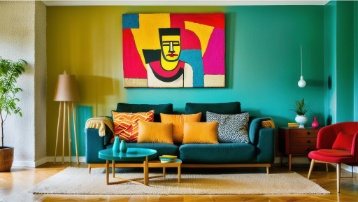
Raw, intuitive art created outside of traditional boundaries, featuring primitive and unconventional artistic expressions.
Art Deco
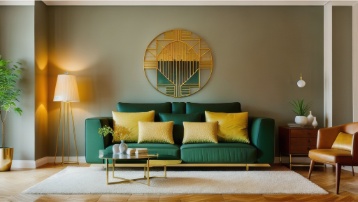
Bold geometric forms with stepped profiles, featuring decorative zigzags, sunbursts, and chevron patterns, combining luxurious materials with streamlined shapes and strong vertical emphasis in façades.
Arte Povera

Utilizes simple, humble materials to create profound statements, emphasizing raw authenticity and material honesty.
Assemblage Art

Combines found objects and mixed materials to create three-dimensional compositions with textural complexity.
Baroque

Characterized by opulent details, dramatic colors, and grandeur, reflecting the extravagance of the 17th century.
Bauhaus

Combines functionality with artistic vision, featuring clean geometric forms and primary colors in a modernist approach.
Biophilic

Integrates natural elements, greenery, and natural light to enhance connectivity to the natural environment.
Bohemian

A free-spirited aesthetic that mixes textures, patterns, and colors for a personal and eclectic look.
Boho-chic

A bohemian update with a fashionable twist, mixing patterns, colors, and textures for a relaxed vibe.
Christmas

Filled with festive decorations, lights, and colors like red, green, and gold to celebrate the holiday season.
Chinese New Year

Incorporates red and gold decorations, lanterns, and symbols of prosperity to celebrate the lunar new year.
Classic
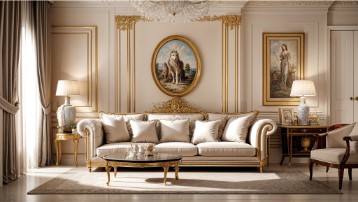
Emphasizes timeless elegance with traditional materials, balanced proportions, and refined details that never go out of style.
Coastal
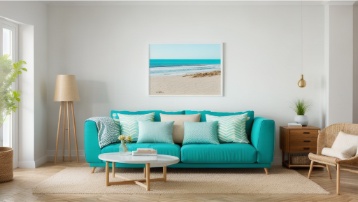
Coastal style captures the breezy essence of the shoreline, blending light, airy color palettes with natural textures like driftwood and sea glass to create a serene and inviting atmosphere.
Color Field painting

Emphasizes large areas of flat color to create contemplative and emotionally evocative spaces.
Conceptual Art
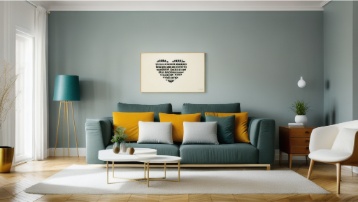
Prioritizes ideas over traditional aesthetic appeal, using minimal forms to convey complex concepts.
Constructivism
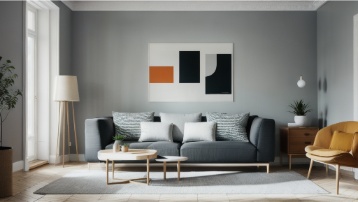
Combines geometric abstraction with industrial materials for a bold, modern aesthetic with social purpose.
Contemporary

Presents current trends with a focus on simplicity, subtle sophistication, and clean lines.
Cottagecore

Celebrates rural life with vintage furnishings, floral patterns, and a handmade, cozy aesthetic.
Cubism
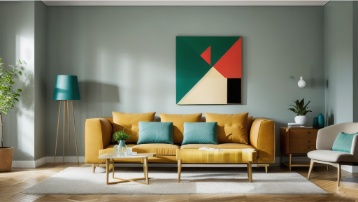
Fragments and reassembles forms into geometric shapes, offering multiple perspectives simultaneously.
Cyberpunk

Futuristic and gritty, blending high-tech elements with a dystopian flair and neon accents.
Dadaism

Embraces absurdity and irrationality, challenging conventional design wisdom with unexpected juxtapositions.
De Stijl

Uses primary colors, black and white, and straight lines to create pure abstract compositions.
Deconstructivism
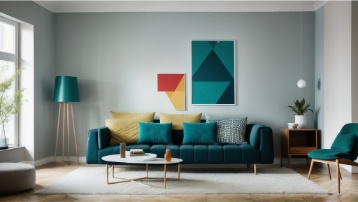
Fragments and manipulates traditional architectural forms for a complex, chaotic appearance.
Easter
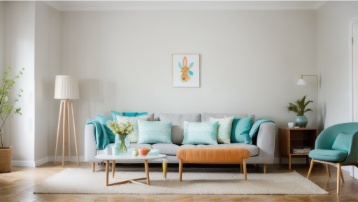
Features pastel colors, floral patterns, and Easter-themed decorations like eggs and bunnies.
Eco-friendly

Emphasizes sustainable, natural materials and energy-efficient design to minimize environmental impact.
Expressionism
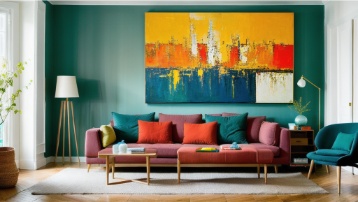
Conveys emotional intensity through distorted forms and bold colors for dramatic impact.
Farmhouse

Combines rustic warmth with modern simplicity, featuring natural textures and a neutral palette.
Fauvism

Emphasizes wild, intense colors and loose brushwork for emotional expression.
French

Exudes elegance and refinement, with ornate details, luxurious fabrics, and a classic color palette.
French Country

Evokes the charm of the French countryside with soft colors, natural materials, and floral motifs.
Functionalism
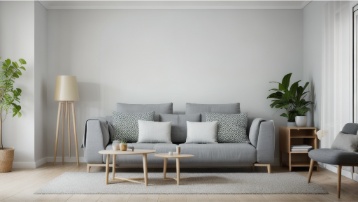
Prioritizes practical purpose over decoration, with clean lines and efficient use of space.
Gothic

Dark and dramatic, with rich colors, ornate details, and a touch of medieval elegance.
High Gothic

Features exaggerated Gothic elements with elaborate ornamentation, pointed arches, and dramatic vertical emphasis.
High Tech
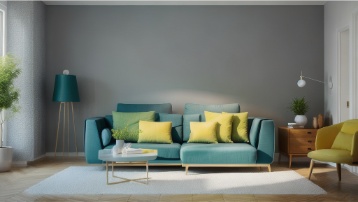
Incorporates advanced technology and industrial materials for a sleek, modern aesthetic.
Halloween

Decor that incorporates spooky, gothic elements and orange and black colors to evoke the Halloween spirit.
Hot pink

A bold and vibrant style that uses hot pink as a statement color to create a lively and energetic space.
Hyperrealism
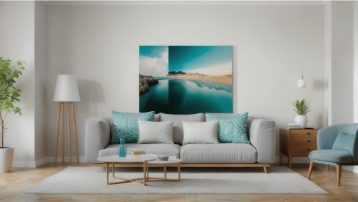
Creates highly detailed, photo-realistic environments with meticulous attention to detail.
Impressionism
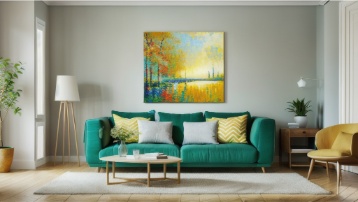
Captures the essence of light and atmosphere with soft, loose brushwork and natural colors.
Industrial

Features raw and unfinished materials like exposed brick, metal, and concrete for a rugged, warehouse look.
Installation Art

Creates immersive environments that transform spaces through site-specific arrangements.
International Style
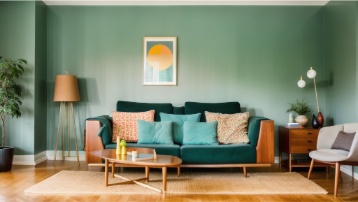
Emphasizes functional simplicity with clean lines, minimal ornamentation, and modern materials.
Japanese Design

Emphasizes minimalism, natural materials, and harmony with nature, following traditional Japanese aesthetics.
Kinetic Art

Incorporates movement and dynamic elements into the design for an interactive experience.
Kitsch

Embraces deliberately tasteless or tacky elements for ironic or playful effect.
Land Art

Integrates natural landscapes and elements into the design for environmental harmony.
Luxury

Exudes luxury with premium materials, elegant design elements, and meticulous attention to detail. Incorporate rich textures, sophisticated lighting, and a harmonious color palette for a refined and opulent atmosphere.
Mannerism

Features elegant sophistication with exaggerated proportions and dramatic compositions.
Maximalist
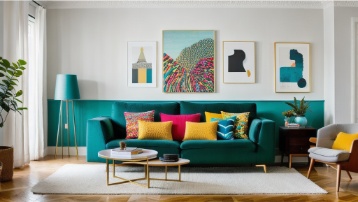
Embraces bold patterns, vibrant colors, and a mix of textures and eras for a rich, layered look.
Medieval
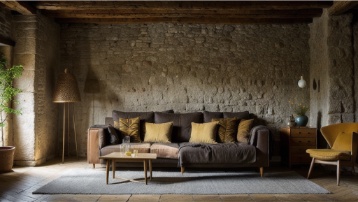
Reflects the historical period with heavy wooden furniture, stone walls, and wrought iron details.
Metaphysical Art

Creates dreamlike spaces with mysterious juxtapositions and classical architectural elements.
Mid-Century Modern

Characterized by sleek lines, organic shapes, and functional design from the mid-20th century.
Minimalism

Emphasizes extreme simplicity, clutter-free spaces, and a monochromatic color scheme to create a tranquil environment.
Modern

Characterized by clean lines, neutral colors, and simplicity, focusing on function over decoration.
Modern Boho

Modern Boho blends relaxed, eclectic decor with clean, contemporary touches.
Modernism
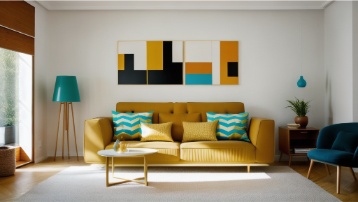
Embraces innovation and experimentation, rejecting traditional decorative elements in favor of simplified forms.
Nautical

Inspired by the sea, using blue and white hues, maritime accessories, and striped patterns.
Neo-Classic
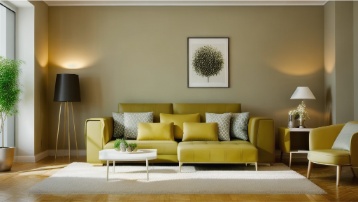
Blends elegance and symmetry with classical motifs, featuring grand columns, ornate moldings, and luxurious materials for a timeless and refined aesthetic.
Neo-Expressionism
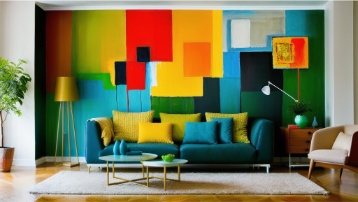
Revives emotional intensity with bold colors and aggressive brushwork in a contemporary context.
Neo-Gothic

Reinterprets Gothic elements with modern materials and simplified forms while maintaining dramatic effect.
Neo-Romanticism

Combines romantic imagery and emotions with contemporary artistic techniques.
Parisian

Elegant and sophisticated, with a blend of historic and modern elements, reflecting Parisian taste.
Pop Art

Incorporates bold colors and popular culture imagery for a fun, contemporary feel.
Post-Impressionism

Builds on impressionist style with stronger colors and more defined forms.
Postmodernism

Challenges modernist principles with eclectic combinations of styles and playful architectural elements.
Pre-Raphaelite
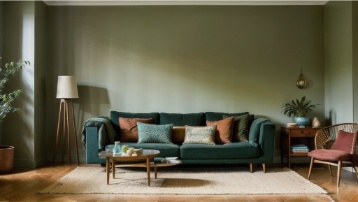
Features rich colors, detailed patterns, and romantic medieval-inspired imagery.
Primitivism

Draws inspiration from tribal and folk art, emphasizing raw expression and simplified forms.
Psychedelic Art

Features vibrant colors, swirling patterns, and kaleidoscopic designs inspired by 1960s counterculture.
Punk Art

Embodies rebellion and DIY aesthetic with raw, aggressive styling and anti-establishment themes.
Realism

Strives for accurate, detailed representation of subjects without idealization.
Regionalism

Celebrates local culture and traditions through architectural elements and decorative motifs.
Renaissance

Revives classical principles with balanced proportions, symmetry, and refined architectural details.
Retro

Revives styles from the past, especially the 50s, 60s, and 70s, for a nostalgic and fun atmosphere. Retro furnitures and decor.
Retro Futuristic

Blends retro style with futuristic elements, imagining the future as envisioned in the past.
Rococo
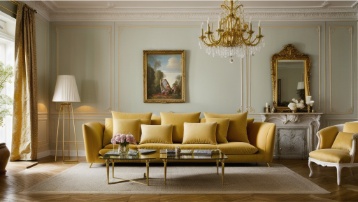
Features delicate, ornate decoration with light colors and curved forms for an elegant, playful effect.
Rustic
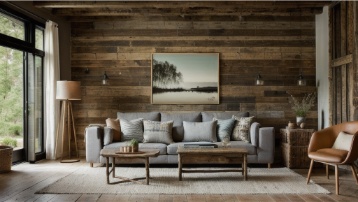
Embraces natural beauty with raw wood, stone, and a palette inspired by the outdoors for a cozy, earthy feel.
Scandinavian

Characterized by functionality, simplicity, and a connection to nature, with a light, muted color palette.
Shabby-Chic

Shabby-Chic blends vintage elegance with a distressed look for a comfortable, lived-in feel.
Simple
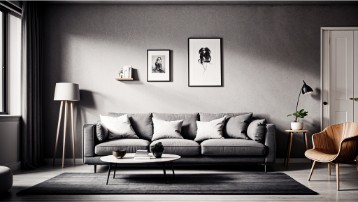
Focuses on functionality and minimal decoration for a clean and uncluttered space.
Ski chalet

Evokes coziness and warmth with rustic elements, natural wood, and a fireplace, reminiscent of a mountain lodge.
Street Art

Incorporates urban art aesthetics with bold graphics and graffiti-inspired elements.
Structural Expressionism
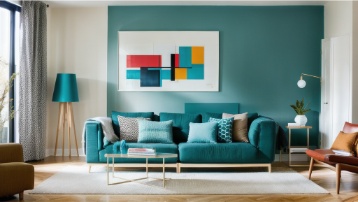
Emphasizes building structure as a design element, making engineering features visually prominent.
Structuralism
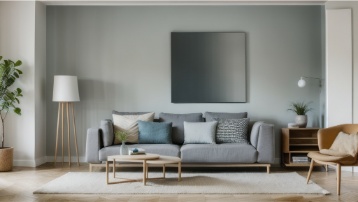
Focuses on modular elements and systematic organization in architectural design.
Superflat
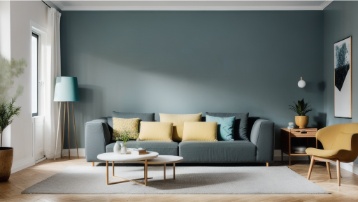
Combines traditional Japanese art with contemporary pop culture in a flat, graphic style.
Surrealism

Creates dreamlike environments with unexpected combinations and distorted reality.
Symbolism

Uses symbolic imagery and mystical elements to create meaning-rich environments.
Transavantgarde
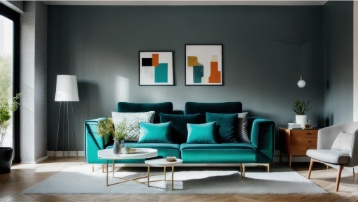
Combines traditional and contemporary elements with expressive, eclectic styling.
Tribal

Incorporates indigenous patterns, textures, and art, celebrating cultural heritage and adding earthy warmth.
Tropical

Features lush greenery, bright colors, and natural materials to evoke the feel of a tropical paradise.
Ukiyo-e

Draws inspiration from Japanese woodblock prints with flat perspectives and bold outlines.
Vaporwave

A retro-futuristic style that combines 80s and 90s nostalgia with pastel colors and digital or cyber motifs.
Victorian
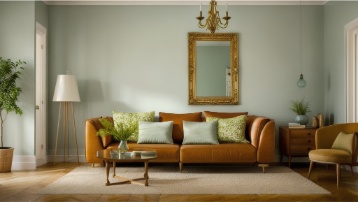
Features ornate details, rich colors, and elaborate decorations characteristic of the 19th century.
Vintage

Incorporates pieces with history and character, often from specific eras, for a nostalgic feel.
Vorticism

Combines angular forms and dynamic movement inspired by machinery and modern life.
Zen

Focuses on tranquility and simplicity, inspired by Japanese minimalism and natural elements.
Last updated